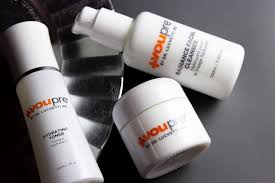
Understanding Skincare Ingredient Labels: The Importance of INCI Names and How to Read Them
If you’ve ever flipped over your favorite skincare product and stared at the ingredient list with confusion, you’re not alone. Those long, often unpronounceable names might seem intimidating, but there’s a method to the madness. Skincare product labels follow a strict, standardized system that helps ensure transparency, safety, and global consistency. That system is called INCI—International Nomenclature Cosmetic Ingredient.
In this guide, we’ll break down what INCI names are, why they matter, and how you can use them to find the right products for your skin type. Whether you’re a skincare beginner or a seasoned beauty enthusiast, understanding how to read a product label is key to making smarter, safer choices.
What Are INCI Names?
INCI stands for International Nomenclature Cosmetic Ingredient, a standardized naming system for skincare and cosmetic product ingredients. These names are established by the Personal Care Products Council (PCPC) and are published in the International Cosmetic Ingredient Dictionary and Handbook. They’re recognized globally—by the U.S. FDA, the European Commission, and regulatory bodies in countries such as Japan and China.
The goal of INCI is simple: to create a universal language for cosmetic ingredients. This ensures consistency and transparency across countries and languages. Whether you’re shopping in New York, Tokyo, or Paris, a product containing “Glycerin” or “Sodium Hyaluronate” will have those exact names on the label—no confusion, no translation needed.
Why Are INCI Names Important?
So why do these formal, scientific names matter? Here are a few key reasons:
1. Global Consistency
Before INCI names, the same ingredient might have several different names in various countries. For example, what’s known as “Vitamin E” in one region might be labeled “Tocopherol” in another. INCI standardization solved that by creating a universal nomenclature, allowing consumers and professionals worldwide to speak the same language when it comes to skincare.
2. Transparency
Consumers today are more ingredient-savvy than ever. Whether you’re avoiding synthetic fragrances, parabens, or specific allergens, being able to read a label with confidence is essential. INCI names offer complete transparency—you can look up what’s in your product and decide whether it’s suitable for your needs.
3. Safety and Regulation
For dermatologists, researchers, and formulators, INCI names are crucial for identifying potential allergens or irritants and ensuring products comply with health and safety regulations. Regulatory bodies like the FDA and EU cosmetic regulators require products to use INCI names in order to be legally sold.
4. Consistency in Research
When scientists or skincare professionals reference ingredients in clinical studies or technical documentation, they rely on INCI names. This ensures that research findings are reliable and can be properly applied in product development and consumer education.
How Are Ingredients Listed on Skincare Labels?
Ingredients on skincare product labels aren’t just listed randomly. There are clear rules for how they must be presented:
Order of Predominance: Ingredients are listed in descending order by concentration. This means the ingredient that makes up the highest percentage of the formula appears first.
Lower-Concentration Ingredients: Once the concentration drops below 1%, the rest of the ingredients can be listed in any order—but most brands still try to maintain a logical sequence.
Fragrance and Color Additives: These are typically listed toward the end, unless present in significant amounts.
This format is similar to food labels, helping consumers make informed decisions at a glance.
How Are INCI Names Assigned?
INCI names aren’t just chosen at random. Here’s a look at the naming process:
1. Standardized Rules
The INCI system follows strict conventions and classification protocols. Ingredients are categorized by their chemical composition or source.
2. Botanical Ingredients
Plant-derived ingredients are listed using the Latin binomial (genus and species) followed by the part of the plant used. For instance:
Sunflower seed oil: Helianthus Annuus (Sunflower) Seed Oil
Aloe vera leaf juice: Aloe Barbadensis Leaf Juice
3. Chemical Compounds
Chemical ingredients use either IUPAC names or well-known conventional names. For example:
Water: Aqua
Glycerin: Glycerin
Vitamin C: Ascorbic Acid
4. Trade Names vs INCI Names
Companies often brand ingredients with catchy trade names, like “HydraBoost” or “Glowzyme.” But on the label, the INCI name must be used—such as “Sodium Hyaluronate” for a form of hyaluronic acid.
5. Complex Blends
For complex mixtures, such as plant extracts with multiple compounds, INCI names might reflect the overall mixture or the main active components.
6. Review and Updates
Manufacturers submit new ingredients to the Personal Care Products Council, which reviews them for accuracy and safety. Once approved, these names are added to the INCI Dictionary, which is updated regularly.
Are INCI Names Used Worldwide?
Yes—INCI names are used and required in most parts of the world, including:
United States
European Union
Canada
China
Japan
Australia
This makes it easier for consumers and professionals to recognize ingredients across different regions and ensures that labels are clear and consistent, no matter where you’re shopping.
How to Read a Skincare Label Like a Pro
Here’s how to decode the ingredients list on your next skincare product:
1. Start with the First Five Ingredients
These make up the bulk of the formula, so they give the best indication of what the product will actually do. Look for:
Hydrating agents like Glycerin, Propanediol, or Sodium Hyaluronate
Emollients like Caprylic/Capric Triglyceride or Squalane
Active ingredients like Niacinamide, L-Ascorbic Acid (Vitamin C), or Salicylic Acid
2. Identify Irritants or Allergens
If you have sensitive skin or known allergies, scan for:
Fragrance (Parfum)
Essential oils (e.g., Limonene, Linalool)
Drying alcohols (e.g., Alcohol Denat.)
3. Know Your Actives
Some ingredients do the heavy lifting in skincare formulas. Here’s what to look for based on your skin needs:
Skin Type Helpful INCI Ingredients
Dry Skin Glycerin, Sodium Hyaluronate, Ceramide NP, Squalane
Oily Skin Niacinamide, Zinc PCA, Salicylic Acid, Bentonite
Sensitive Skin Panthenol, Allantoin, Madecassoside, Centella Asiatica
Acne-Prone Benzoyl Peroxide, Tea Tree Leaf Oil, Sulfur, Azelaic Acid
Mature Skin Retinol, Ascorbic Acid, Peptides, Tocopherol (Vitamin E)
Pigmentation Alpha-Arbutin, Kojic Acid, Tranexamic Acid, Licorice Root
4. Look Beyond the Buzzwords
A product labeled as “natural” or “clean” may still contain ingredients that don’t agree with your skin. Let the INCI list guide your decision rather than marketing terms.
How to Use INCI Names to Find the Right Products
Many skincare websites now allow you to search by INCI ingredient. This is especially helpful if you’re trying to:
Avoid certain ingredients (e.g., parabens, sulfates, silicones)
Find products that include actives like Retinol or Vitamin C
Build a skincare routine based on your skin type or concern
Try These Tools:
Take a Skin Type Quiz: Some skincare brands offer personalized routines based on your responses.
Explore an Ingredient Library: Browse by INCI name to learn what each ingredient does.
Use Skin Type Icons: Some brands now use octagon icons or color-coded systems to indicate which products are best for oily, dry, or sensitive skin.
Final Thoughts: Knowledge Is Power in Skincare
Reading skincare labels might feel like decoding a foreign language at first—but once you understand INCI names and how ingredients are listed, you’ll be better equipped to choose products that actually benefit your skin.
Whether you’re battling dryness, acne, or just trying to simplify your routine, understanding what’s inside your skincare is the first step to results that last.
The next time you’re browsing the beauty aisle, flip that bottle over. The real story is in the ingredients—and now you know how to read it.


